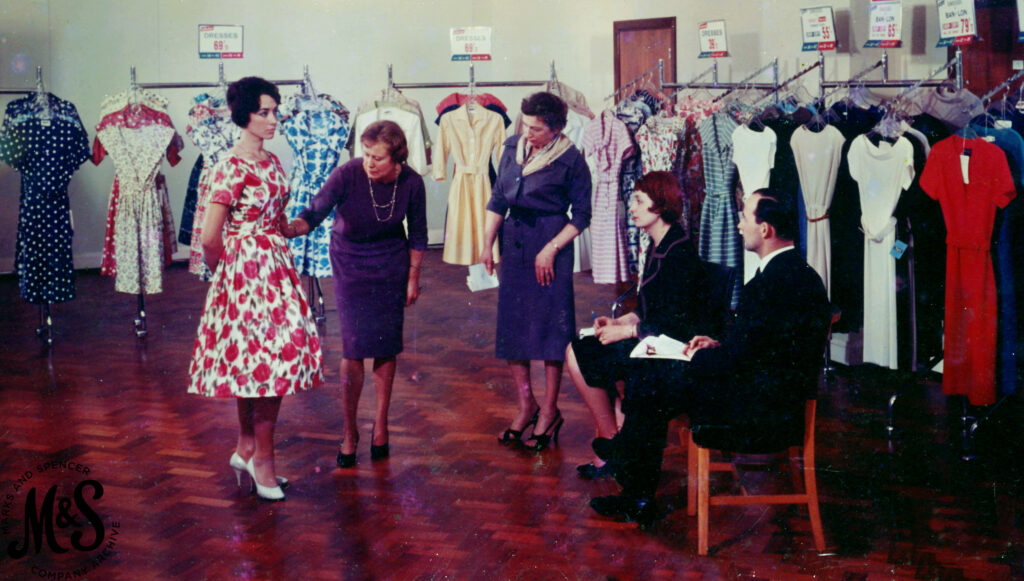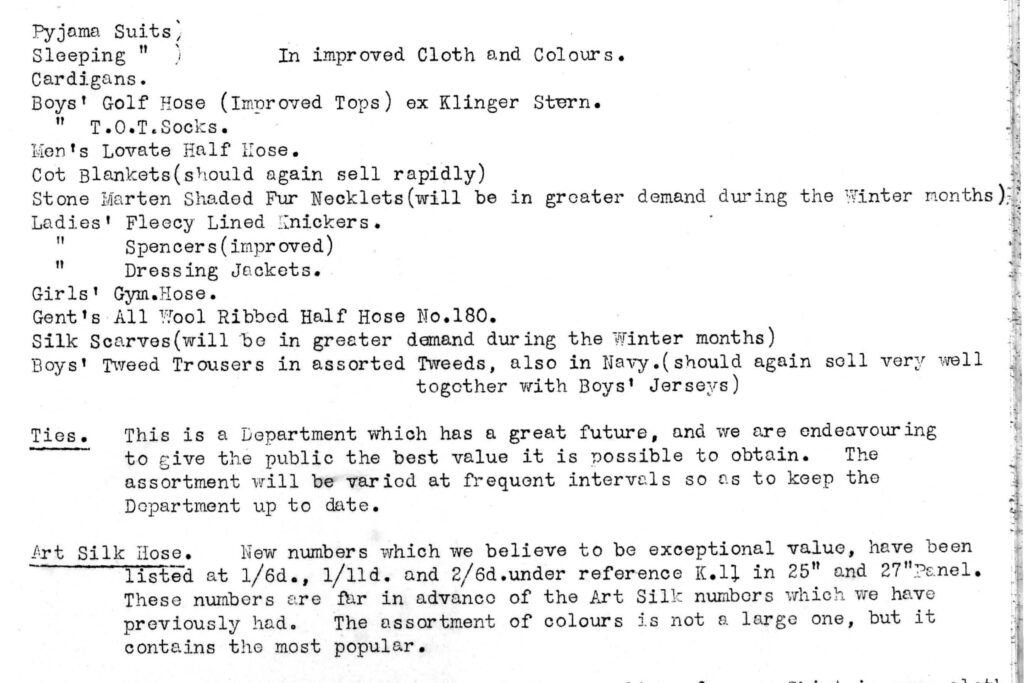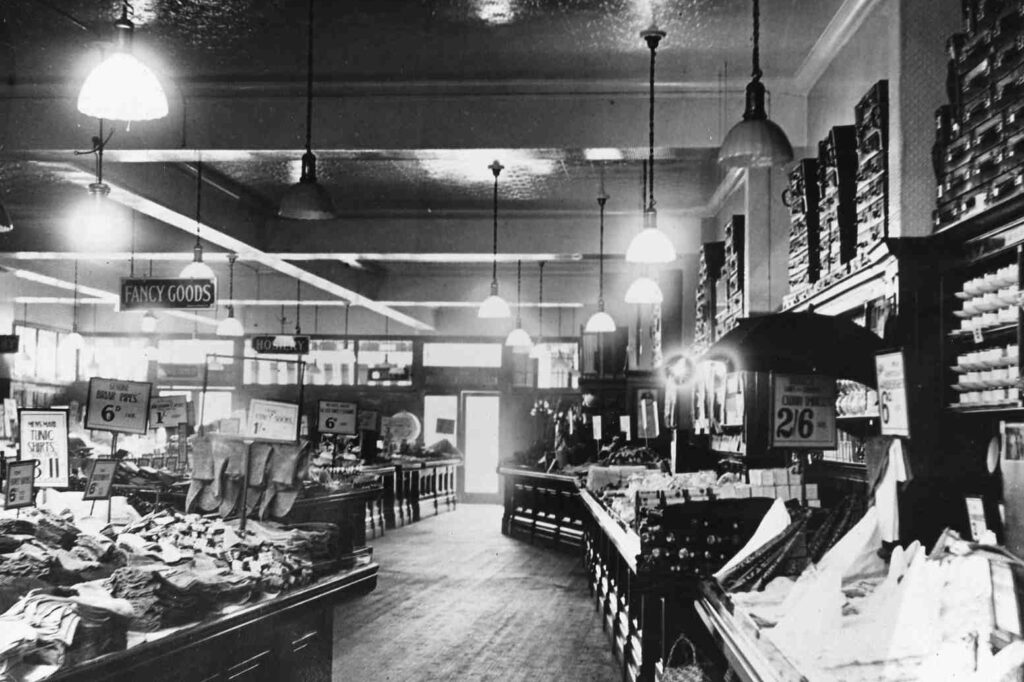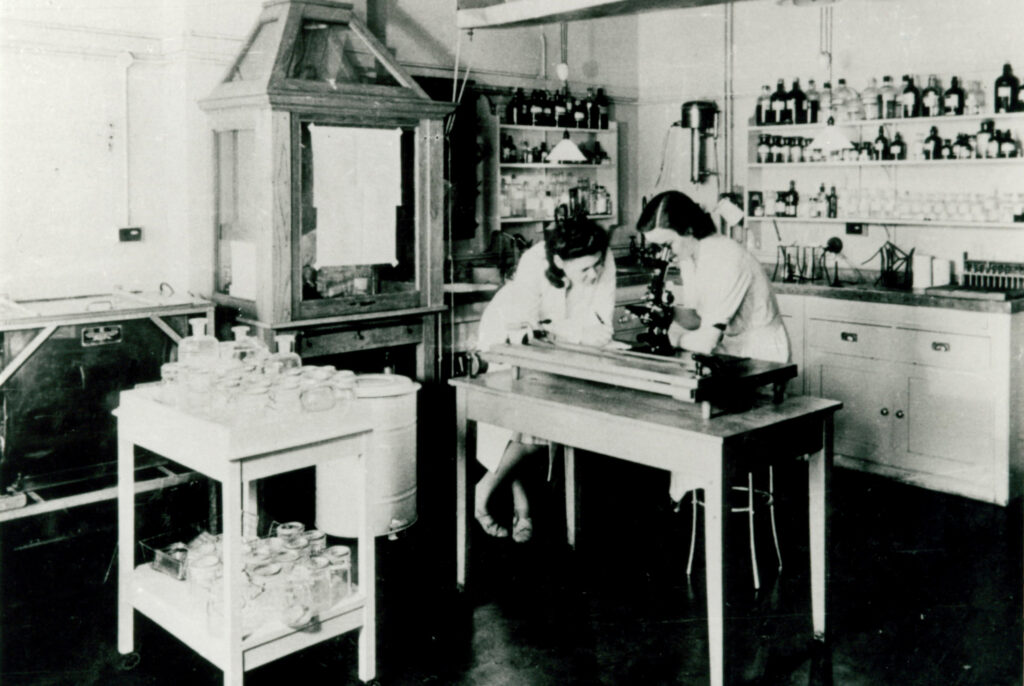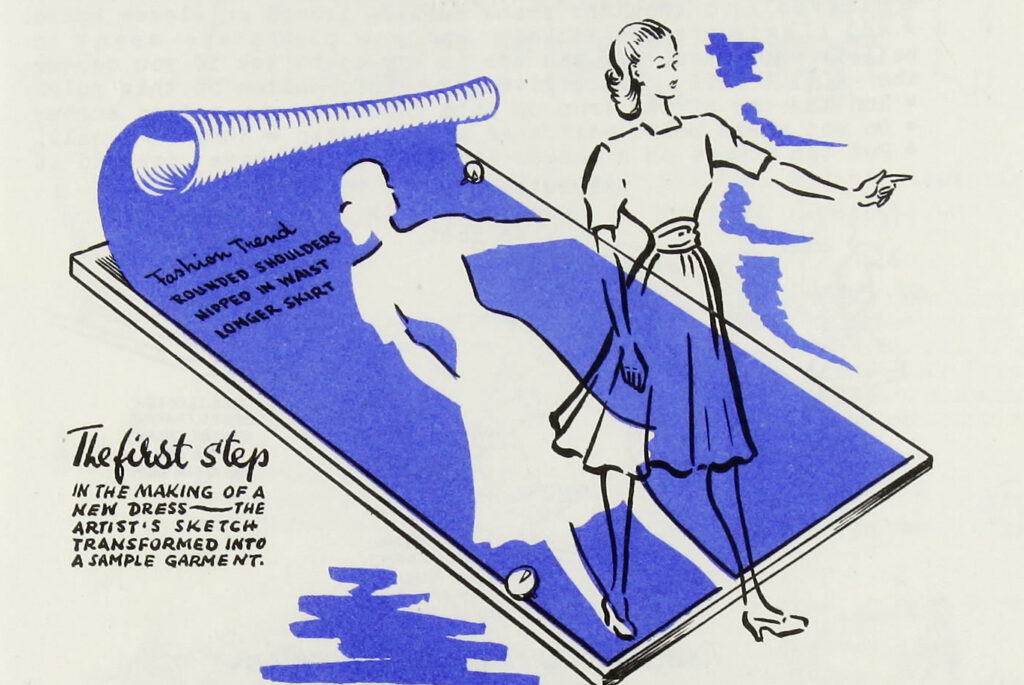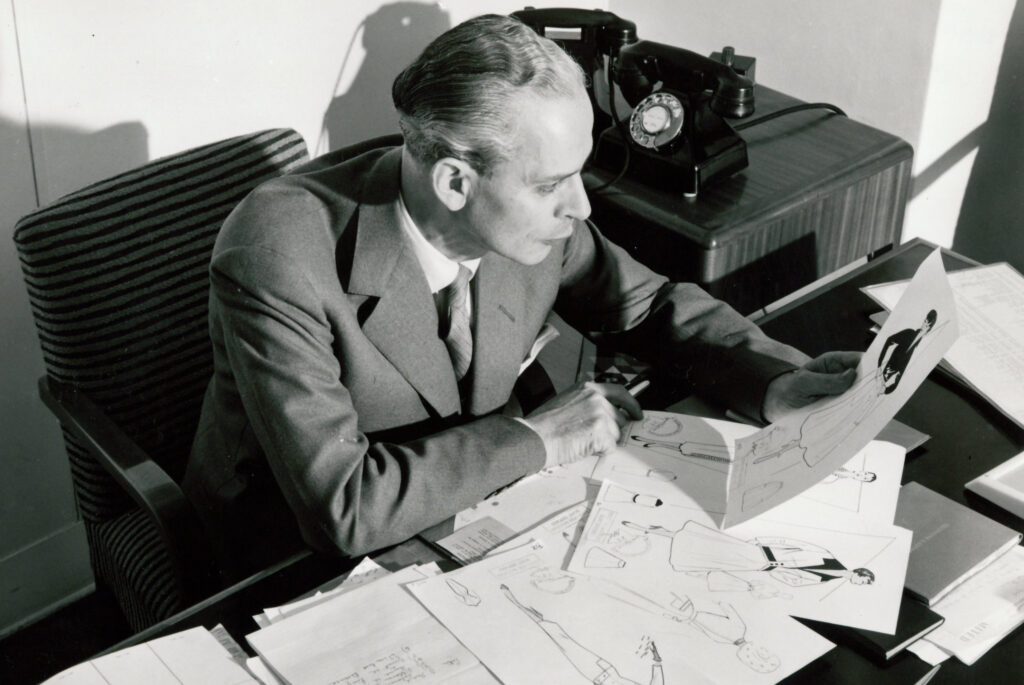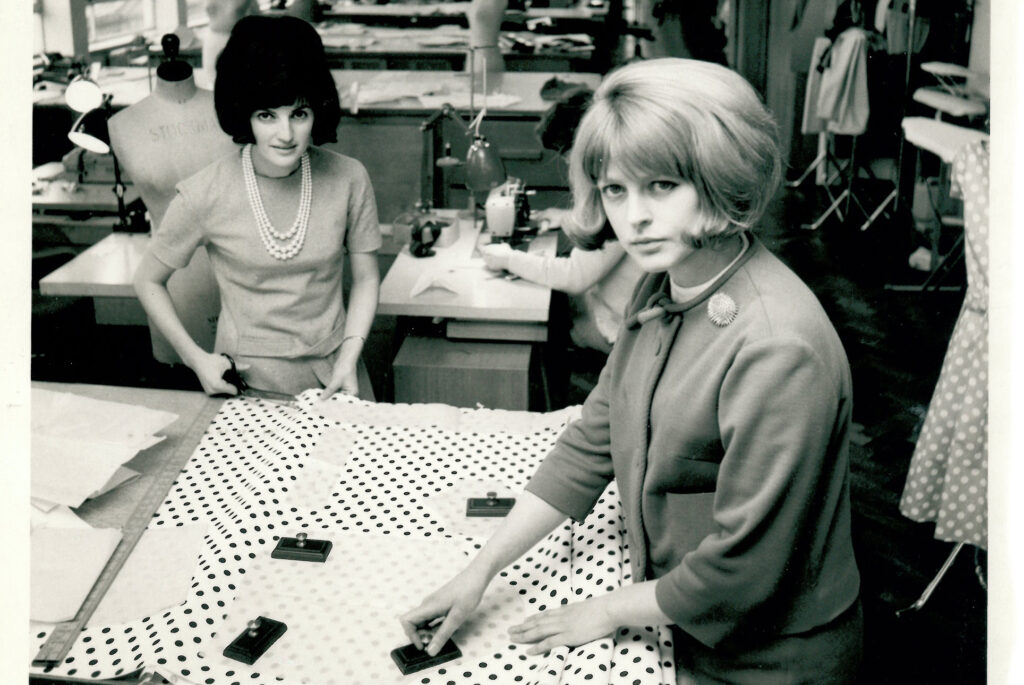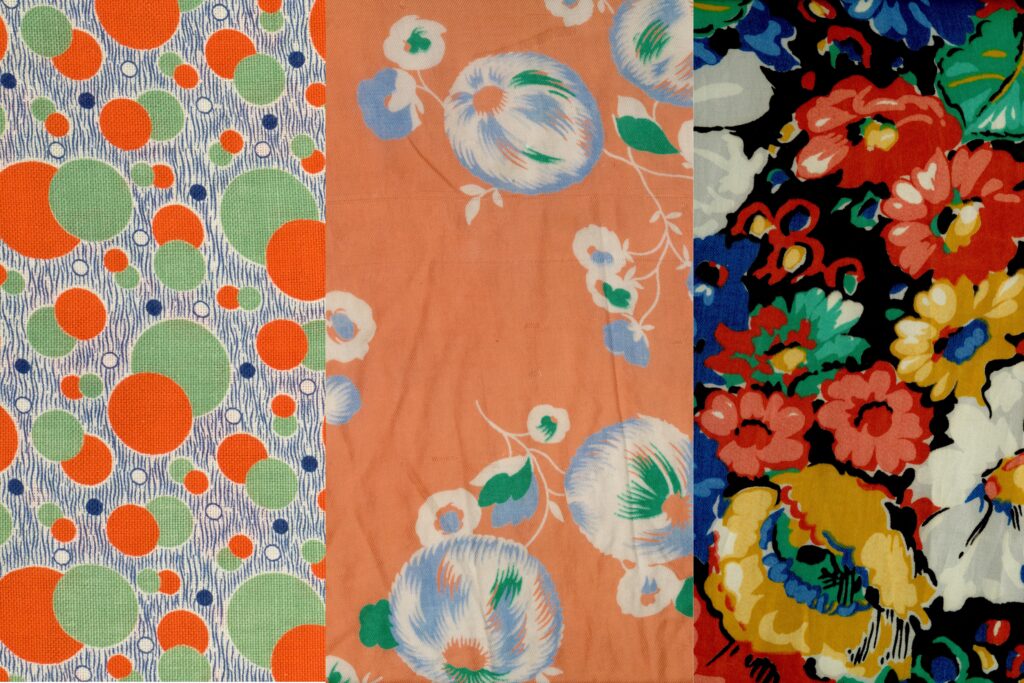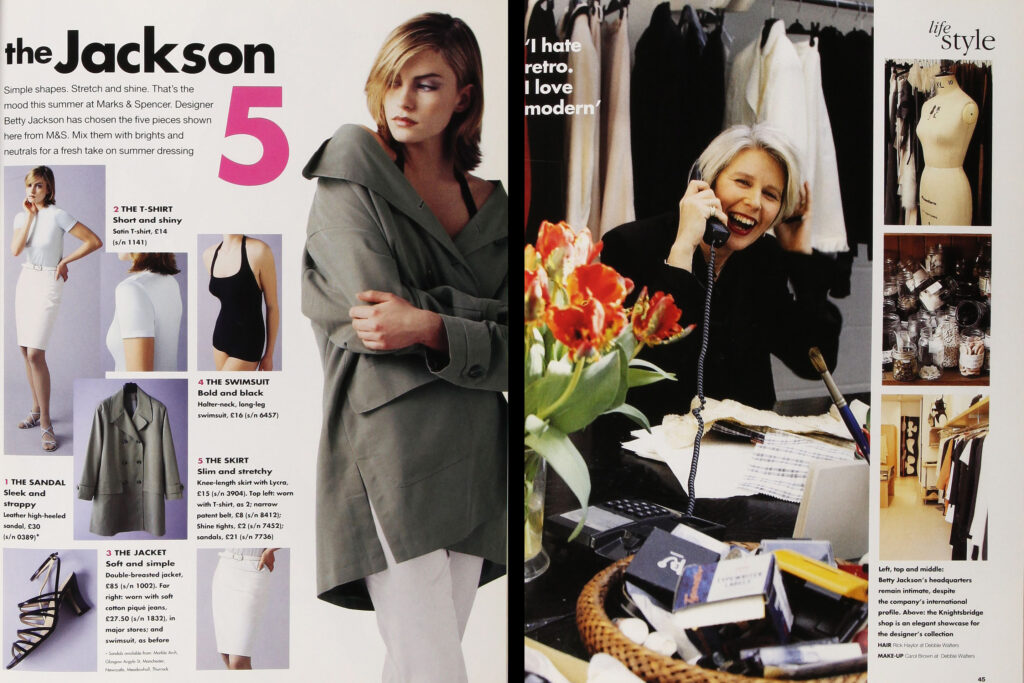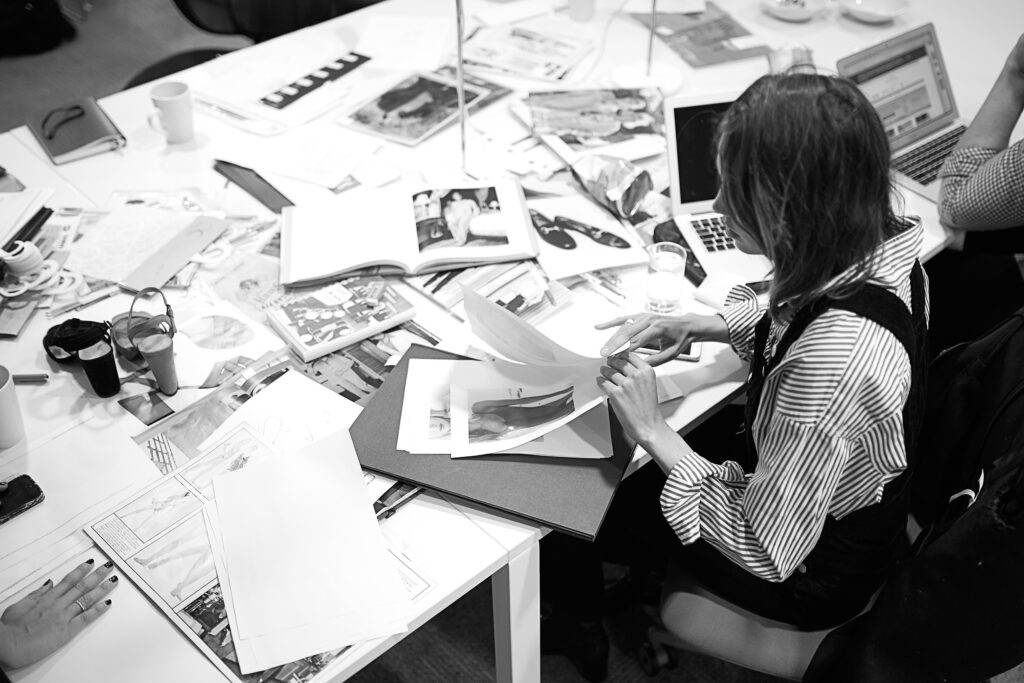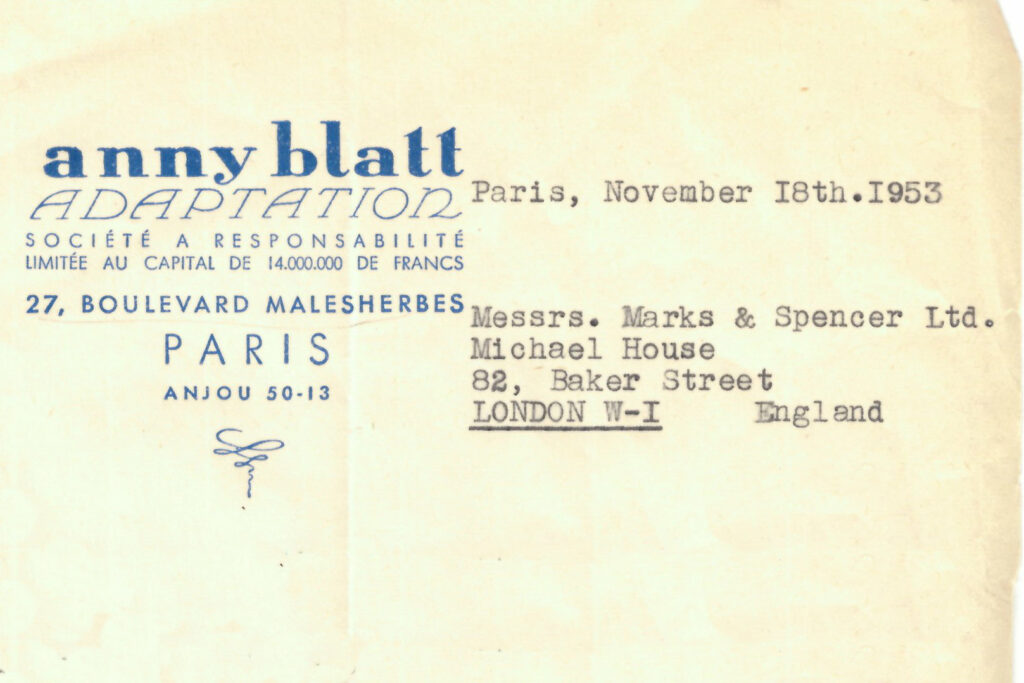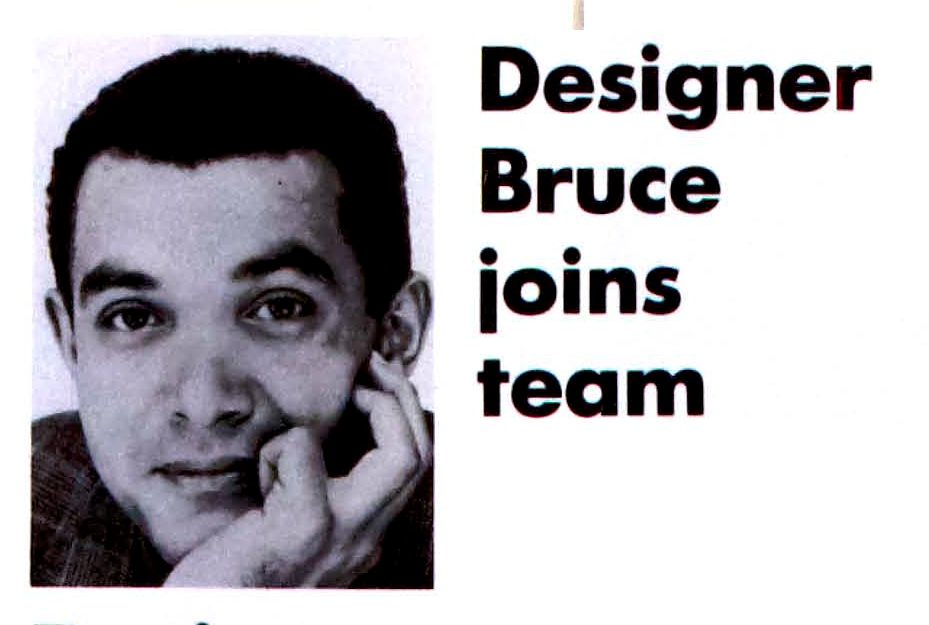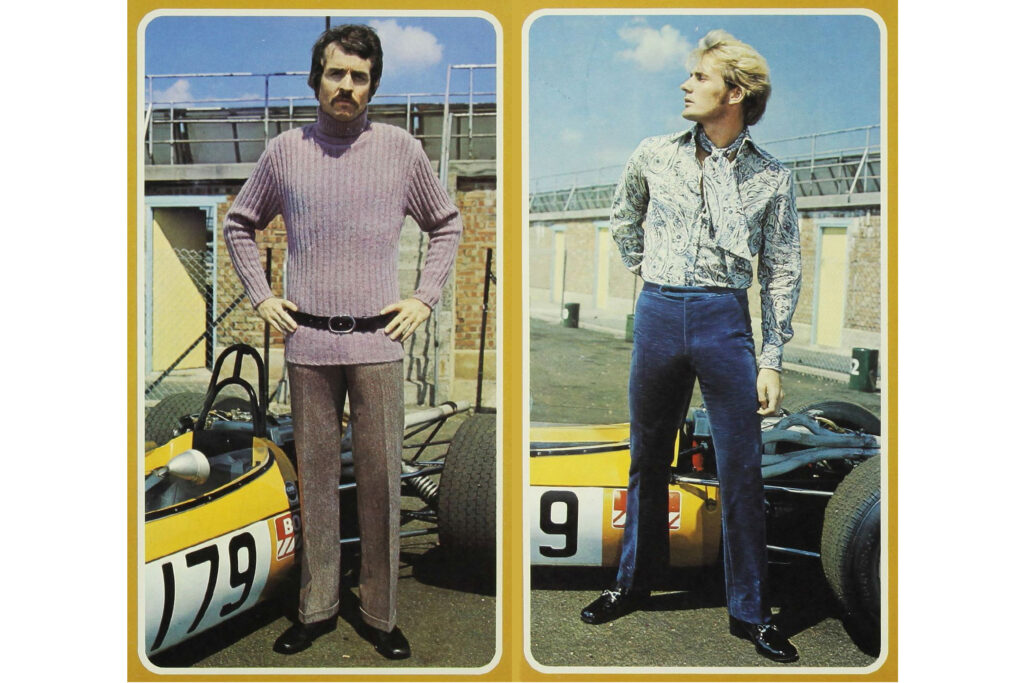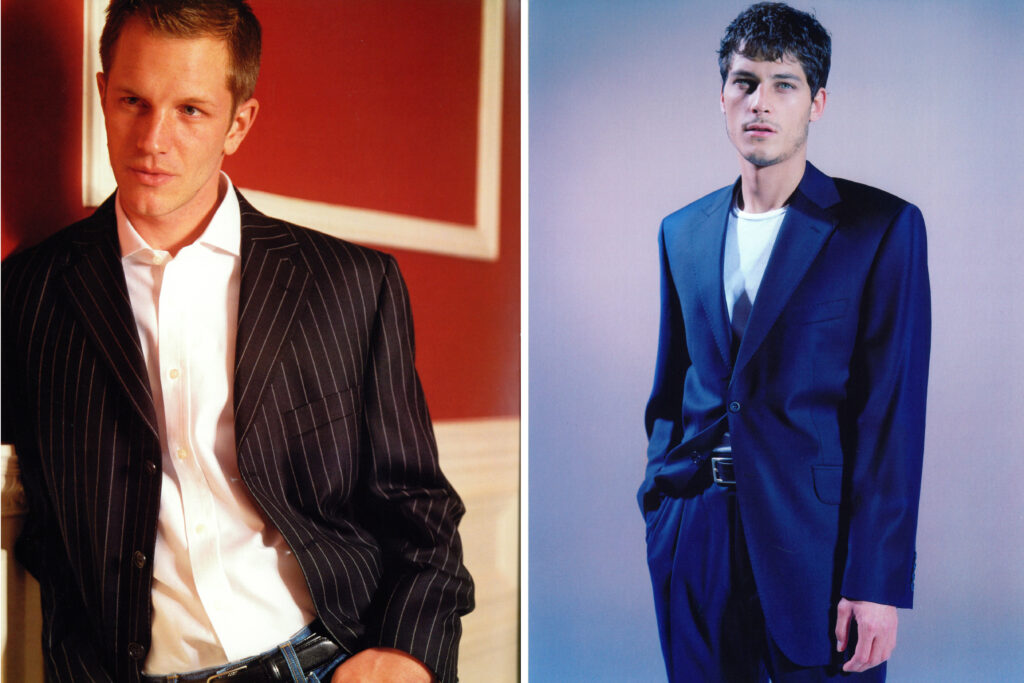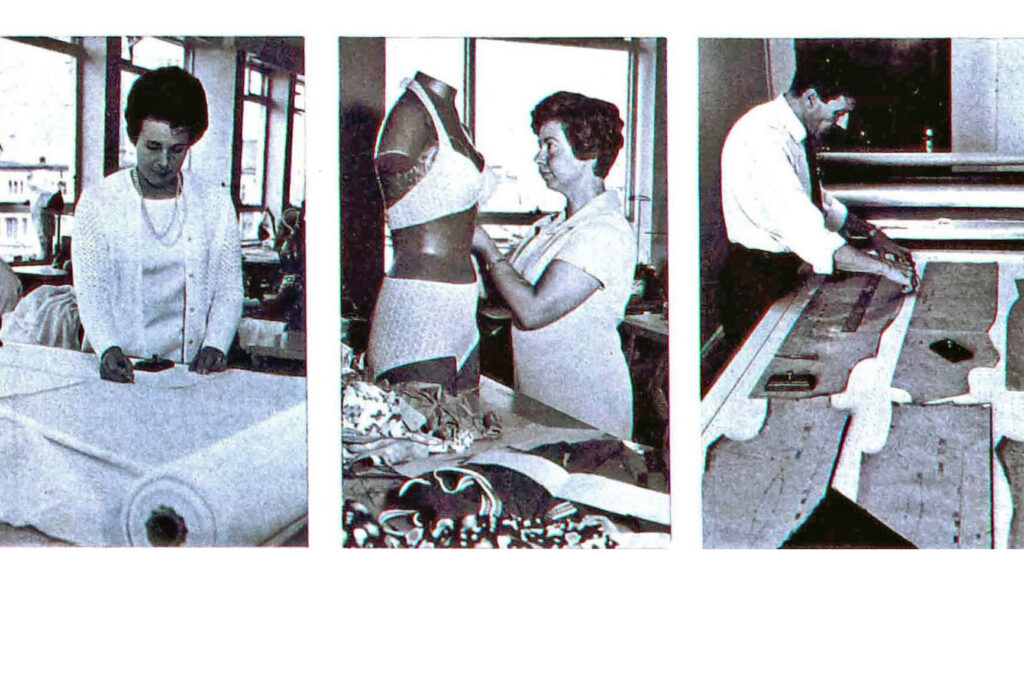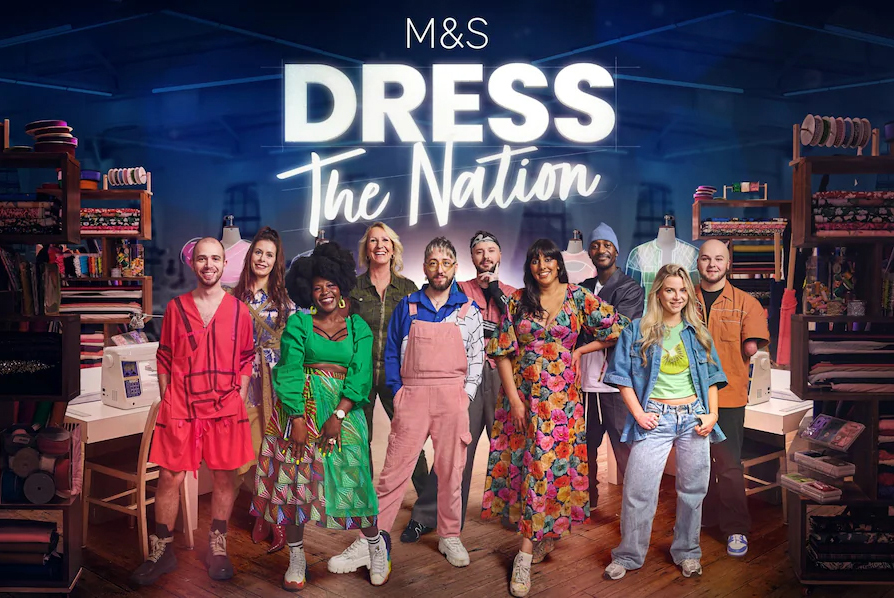We’ve often collaborated with external designers – bringing in expertise and a new perspective.
In the 1950s we worked with designer Anny Blatt. Anny had founded her own Parisian haute-couture house in the 1930s, specialising in knitted woolen garments. She was able to advise M&S on upcoming trends and innovations in jerseywear and knitwear.
One the most long-running designer collaborations began in 1962 when Michael Donnellan joined the business as a consultant. Known as Michael of Carlos Place, he had headed the house of Lachasse in the 1940s, before running his own couture house. Journalist Beryl Hartland commented ‘The rich woman goes to Michael for his elegance, beautiful making and scissoring; the not so rich get his know-how, too, in clothes from Marks & Spencer.’
We employed Bruce Oldfield as a womenswear consultant in 1988. Collaborations and consultancies since then have included Julien Macdonald, Hussein Chalyan, Patricia Field and Zandra Rhodes, as well as collaborations with famous faces including Twiggy and Alexa Chung as mentioned earlier.

